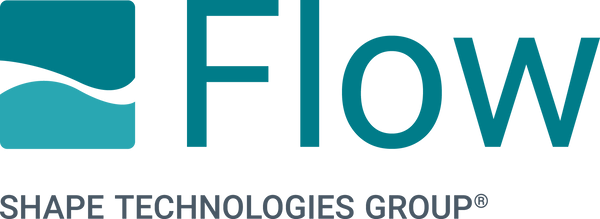How does WaterJet compare to other cutting methods?
There are numerous cutting techniques in metal fabrication. And if you’re reading this, you’ve probably asked yourself, ‘Which is right for me?’
Waterjet, laser, plasma, and Electrical Discharge Machining (EDM) are all popular solutions for fabricators and machine shops. However, what’s right for you depends on the type of work you’re doing and your desired outcomes. We’re breaking down each technology to help inform your decision for which process is right for you.
LASER
Laser cutting uses – you guessed it – laser beams to heat and cut through metal during the fabrication process. Unlike some other methods, including water jetting (and EDM), laser cutting is primarily used to cut through metals like steel and aluminum.
Laser cutting is an effective method if you need the job done quickly. It’s also relatively accurate.
Things to consider:
While laser cutting is efficient, there are some downsides to consider. For one, laser cutters can’t handle thickness like waterjet cutting can. Typically, these machines are best for surfaces up to an inch thick.
In addition, laser cutting requires heat, which can add burn or stress marks to a final product, requiring a secondary finish. Lasers are an option for metals, but it’s limited in the versatility of materials you can cut.

PLASMA
A plasma cutter uses gas and electricity to produce plasma, which is able to cut through materials when hot enough. The heat pierces through the metal and the pressurized gas removes the excess metal. The gases used in plasma cutting are usually argon, nitrogen, and oxygen.
Plasma is often used to cut metals and can cut through thicker materials than laser. However, laser cutting is faster and more accurate than plasma cutting. Out of the four cutting methods, plasma is the least expensive.
Similar to laser cutting, plasma can create heat-affected areas on your final product due to its process. Plasma also leaves slag or dross (scum that forms on molten metal) that can often require secondary processing to create a clean edge. It’s also not as accurate as laser cutting or water jetting.
ELECTRICAL DISCHARGE MACHINING
EDM uses electrical discharges to cut through metal. EDM is an accurate method for cutting materials of 12 inches or less and often requires little-to-no secondary finish.
Since it uses electricity, EDM is only compatible with conductive materials, including alloys and steel. It also will require different wire setups depending on the job.
Things to consider:
EDM is often the slowest of the four processes we’ve discussed, but it can be a great solution for roughing out extremely large parts when a particular edge finish is required, as well as for cutting advanced geometries.

WATERJET
Waterjets can be flexible, adaptable, and allow you to increase the opportunity for types of cut parts and materials. Lasers are designed to handle high production, thin metal materials, and can prove a competitive advantage in the right setup.
And, depending on your manufacturing needs, you may find that the right setup is one that includes both technologies side by side on the shop floor. The number of parts being produced on a typical shop floor can vary significantly, but you can imagine a world where the laser pumps out high-production parts right alongside the waterjet, that cuts anything you need, whenever you need it.
And while many tend to pit waterjet and laser against one another, if your business can support a combination of the two solutions, you can experience the magic of cutting just about any part you come across.
If you’re just getting started in the blanking and fabrication industry, waterjet can be a great consideration for you, and then, once business is steady you can afford the higher price tag of a laser and trust it to knock the parts you need out reliably.
Depending on the needs of your shop, a waterjet and a laser can match up as complementary technologies and can level up your manufacturing production efficiency. While lasers can dominate in mild ferrous steel cutting, waterjet can do all the other things that walk through the door. Need to switch it up and produce parts for aerospace, medical, or industries where the materials can’t afford to have a heat-affected zone? Waterjet will come in clutch.
The long and the short of it is, waterjet and lasers can play well together, and often times act more as a complement to one another than displacement technologies, depending on your specific manufacturing needs.

